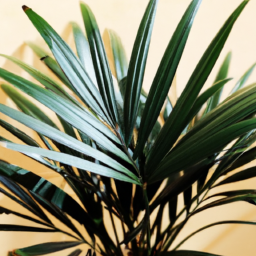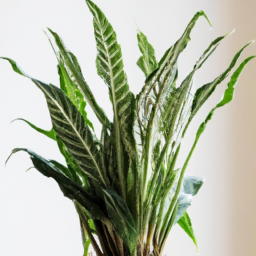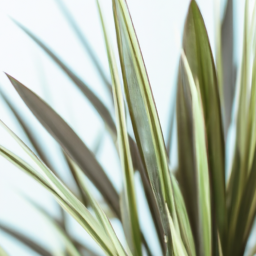
Are you a fan of indoor plants? Have you ever noticed the lush greenery that adorns the lobby or rooms of your favorite hotels? Indoor plants used in hotels are not just for decoration – they also have a variety of benefits for both guests and staff. From improving air quality to creating a calming atmosphere, these plants play a crucial role in enhancing the overall experience of staying in a hotel. In this blog post, we will explore the different types of indoor plants commonly used in hotels and delve into the reasons why they are such a popular choice among hoteliers. So grab a cup of tea, sit back, and let’s dive into the wonderful world of indoor plants used in hotels.
Benefits of Indoor Plants in Hotel Spaces
Enhancing Aesthetics
Indoor plants play a crucial role in enhancing the aesthetics of hotel spaces. They add a touch of nature and greenery, creating a welcoming and relaxing ambiance for guests. The vibrant colors and textures of indoor plants can complement the interior design of the hotel, making the space more visually appealing. Whether placed in the lobby, corridors, or guest rooms, indoor plants can instantly uplift the overall look and feel of the hotel.
In addition to their visual appeal, indoor plants also help in creating a sense of tranquility and serenity in hotel spaces. The presence of plants can have a calming effect on guests, making their stay more enjoyable and comfortable. The natural beauty of indoor plants can evoke positive emotions and create a peaceful atmosphere, which is essential for a relaxing hotel experience.
Furthermore, indoor plants can act as natural air purifiers, improving the air quality in hotel spaces. Plants absorb carbon dioxide and release oxygen through the process of photosynthesis, helping to freshen up the indoor air. This can be particularly beneficial in hotels where guests may be exposed to pollutants and allergens. By introducing indoor plants, hotels can create a healthier environment for guests to enjoy.
Boosting Guest Experience
Indoor plants can significantly enhance the overall guest experience in hotels. The presence of plants can make guests feel more connected to nature, even in a bustling urban environment. This connection with nature can have a positive impact on guests’ well-being, helping them to relax and unwind during their stay. Hotels that incorporate indoor plants into their design can create a more inviting and comfortable atmosphere for guests to enjoy.
Moreover, indoor plants can help to reduce stress and anxiety levels in guests. Studies have shown that being around plants can have a calming effect on the mind and body, promoting a sense of well-being and relaxation. By incorporating indoor plants into hotel spaces, hoteliers can create a more peaceful and rejuvenating environment for guests to escape the stresses of everyday life.
Additionally, indoor plants can act as natural sound absorbers, helping to reduce noise levels in hotel spaces. The presence of plants can soften sounds and create a more serene and peaceful atmosphere for guests. This can be particularly beneficial in busy hotel environments, where guests may appreciate a quieter and more tranquil setting.
Promoting Sustainability
Indoor plants can play a key role in promoting sustainability in hotel spaces. By incorporating plants into their design, hotels can reduce their carbon footprint and contribute to a more eco-friendly environment. Plants help to purify the air, conserve energy, and reduce the need for artificial ventilation systems, making them a sustainable choice for hotel interiors.
Furthermore, indoor plants can help to create a more biophilic design in hotels, which focuses on connecting guests with nature. This design approach can enhance the overall guest experience and promote a sense of well-being and harmony. By incorporating indoor plants into their design, hotels can demonstrate their commitment to sustainability and create a more environmentally conscious space for guests to enjoy.
Overall, indoor plants offer a wide range of benefits for hotel spaces, from enhancing aesthetics and boosting guest experience to promoting sustainability and well-being. By incorporating plants into their design, hotels can create a more inviting, relaxing, and eco-friendly environment for guests to enjoy during their stay.

Popular Types of Indoor Plants for Hotel Decor
Welcome to our guide on popular types of indoor plants for hotel decor! Indoor plants are a great way to enhance the ambiance of a hotel and create a welcoming atmosphere for guests. In this article, we will discuss some of the most popular indoor plants used in hotels and provide tips on how to care for them.
1. Ficus Trees
Ficus trees are a popular choice for hotel decor due to their elegant appearance and low maintenance requirements. These trees have glossy green leaves that add a touch of sophistication to any space. Ficus trees are also known for their air-purifying properties, making them a great choice for hotels with indoor air quality concerns.
When caring for ficus trees, it is important to place them in a well-lit area away from drafts. They prefer consistent moisture levels, so be sure to water them regularly without over-watering. Ficus trees are sensitive to changes in their environment, so try to keep them in a stable location to prevent leaf drop.
To keep your ficus tree looking its best, be sure to dust the leaves regularly and trim any dead or yellowing leaves. With proper care, your ficus tree can thrive and enhance the beauty of your hotel decor.
2. Peace Lilies
Peace lilies are another popular choice for hotel decor, thanks to their beautiful white flowers and easy care requirements. These plants are known for their ability to thrive in low light conditions, making them ideal for hotel lobbies and guest rooms with limited natural light.
When caring for peace lilies, it is important to keep the soil consistently moist but not waterlogged. These plants are sensitive to over-watering, so be sure to allow the soil to dry out slightly between waterings. Peace lilies also benefit from regular misting to maintain humidity levels.
To encourage blooming, be sure to fertilize your peace lily regularly with a balanced fertilizer. Remove any dead flowers or leaves to promote new growth and keep your plant looking fresh and healthy. With proper care, your peace lily can brighten up your hotel decor for years to come.
3. Snake Plants
Snake plants, also known as mother-in-law’s tongue, are a popular choice for hotel decor due to their unique appearance and air-purifying qualities. These plants have tall, upright leaves with striking patterns that add a touch of modern elegance to any space. Snake plants are also known for their ability to remove toxins from the air, making them a great choice for hotels with indoor air quality concerns.
When caring for snake plants, it is important to place them in indirect sunlight and allow the soil to dry out between waterings. These plants are drought-tolerant and can thrive in low light conditions, making them a low-maintenance option for hotel decor. Snake plants are also resistant to pests and diseases, making them a great choice for busy hotel environments.
To keep your snake plant looking its best, be sure to wipe the leaves with a damp cloth to remove dust and keep them looking shiny. Trim any dead or yellowing leaves to promote new growth and maintain the plant’s overall health. With minimal care, your snake plant can thrive and enhance the beauty of your hotel decor.

Maintenance Tips for Indoor Plants in Hotel Settings
Choosing the Right Plants
When it comes to selecting indoor plants for hotel settings, it’s important to consider a few key factors. First and foremost, you’ll want to choose plants that can thrive in low light conditions, as many hotel lobbies and hallways may not receive direct sunlight. Some great options for low light environments include snake plants, pothos, and peace lilies.
In addition to light requirements, you’ll also want to consider the size of the plants and how they will fit into the overall design of the space. Large plants like fiddle leaf figs or palms can make a bold statement in a hotel lobby, while smaller plants like succulents or air plants can be used to add a touch of greenery to guest rooms or bathrooms.
Finally, consider the maintenance requirements of the plants you choose. Some plants are more finicky and require regular watering and fertilizing, while others are more low-maintenance and can thrive with minimal care. Be sure to choose plants that align with the level of care you are able to provide in a hotel setting.
Watering and Fertilizing
Proper watering and fertilizing are key components of maintaining healthy indoor plants in a hotel setting. It’s important to water your plants regularly, but be careful not to overwater as this can lead to root rot. A good rule of thumb is to check the soil moisture before watering – if the top inch of soil is dry, it’s time to water.
In addition to watering, indoor plants will also benefit from regular fertilizing to ensure they have the nutrients they need to thrive. Be sure to use a balanced fertilizer specifically formulated for indoor plants, and follow the instructions on the packaging for best results.
It’s also a good idea to periodically check your plants for signs of pests or disease, as these can quickly spread and cause damage to your plants. If you notice any issues, take action promptly to prevent further damage and keep your plants healthy and vibrant.
Pruning and Repotting
Regular pruning and repotting are essential tasks for maintaining indoor plants in a hotel setting. Pruning helps to promote healthy growth and can prevent your plants from becoming leggy or overgrown. Be sure to remove any dead or yellowing leaves, as well as any stems that are growing in the wrong direction.
Repotting is also important to ensure that your plants have enough room to grow and thrive. As a general rule, most indoor plants will need to be repotted every 1-2 years to refresh the soil and provide more space for root growth. When repotting, be sure to choose a pot that is slightly larger than the current one, and use a high-quality potting mix to support healthy growth.
By following these maintenance tips, you can ensure that the indoor plants in your hotel setting remain healthy and vibrant, adding a touch of natural beauty to the space for guests to enjoy.
Let’s wrap up what we learned
Indoor plants have become a popular trend in hotels around the world, not only for their aesthetic appeal but also for their numerous benefits. Hotels are incorporating a variety of indoor plants into their decor to create a welcoming and relaxing atmosphere for guests. From small succulents on bedside tables to large ferns in the lobby, plants are being used to enhance the overall ambiance of the hotel.
In addition to their decorative purposes, indoor plants also have practical benefits for hotels. Plants can help improve air quality by absorbing carbon dioxide and releasing oxygen, creating a healthier environment for guests and staff. They can also help reduce noise levels and create a sense of tranquility in busy hotel spaces. With the growing popularity of biophilic design, hotels are recognizing the importance of incorporating nature into their interiors, and indoor plants are a simple yet effective way to do just that.
Check Out These FAQs:
Q1: What are some popular indoor plants used in hotels?
A1: Some popular indoor plants used in hotels are peace lilies, snake plants, pothos, spider plants, and ZZ plants. These plants are chosen for their ability to thrive in indoor environments and improve air quality.
Q2: How do indoor plants enhance the ambiance of hotels?
A2: Indoor plants enhance the ambiance of hotels by adding a touch of greenery and life to the space. They create a welcoming and relaxing atmosphere for guests, making the hotel feel more inviting and comfortable.
Q3: What are the benefits of using indoor plants in hotel decor?
A3: Using indoor plants in hotel decor has several benefits. They help improve air quality by removing toxins, reduce stress and anxiety in guests, and create a more visually appealing environment. Additionally, they can help regulate humidity levels and absorb sound, creating a quieter atmosphere.
Q4: How can hotels care for indoor plants to ensure they thrive?
A4: Hotels can care for indoor plants by providing them with the right amount of light, water, and humidity. It’s important to regularly dust the leaves, trim any dead or yellowing foliage, and repot the plants as needed. Regularly checking for pests and diseases is also crucial for maintaining healthy plants.
Q5: Can indoor plants be used in all areas of a hotel?
A5: Indoor plants can be used in various areas of a hotel, including lobbies, guest rooms, restaurants, and common areas. However, it’s essential to choose plants that are suitable for the specific lighting and humidity conditions of each space. Additionally, some plants may be more appropriate for high-traffic areas than others.
Dr. Olivia Green is a botanist with over two decades of experience in indoor plant cultivation. She holds a Ph.D. in Plant Biology and has dedicated her career to researching plant behavior in controlled environments. Dr. Green is passionate about helping plant enthusiasts master the art of indoor gardening through her extensive knowledge and practical insights.


